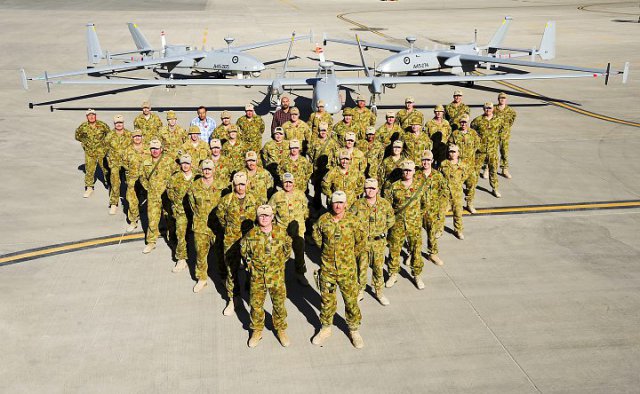After soaring the skies of Afghanistan in missions totalling more than three years, Australia’s Heron surveillance drones and their operators are heading home.The Heron unarmed remotely piloted aircraft completed more than 27,000 mission hours since starting operations in August 2009.
The Heron detachment comprised around 40 personnel who operated two, and later three, of the Israeli-made Herons from Kandahar airport, initially in support of Australian forces but for the last year for coalition and Afghan security forces.
Herons can fly for more than 24 hours at altitudes up to 10,000 metres, beaming live video of the ground below to the control station.
Wing Commander Phillip Parsons, commander of the 15th and final Heron rotation, said Australian Heron operators had forged a reputation for professionalism and dependability. On some occasions, Australian Herons were the only remotely piloted aircraft flying in the region.”We’d often be called upon to get overhead and provide information back to coalition partners,” he said in a statement.
From Heron’s first days supporting the special operations task group through to the end of Australia’s mission in Oruzgan province last year and support to ISAF units throughout 2014, Heron has provided information needed to fight and keep their people safe, he said.
Most Australian forces withdrew from Afghanistan at the end of last year, but the Heron mission was extended to assist Afghan forces as they took an increasing role in security operations. About 400 Australian personnel remain in Afghanistan in a variety of advisory roles.
During the past five years, almost 500 air force, army and navy personnel served with the Heron detachment. They will all return home by the end of this month.
Source: Yahoo! News

